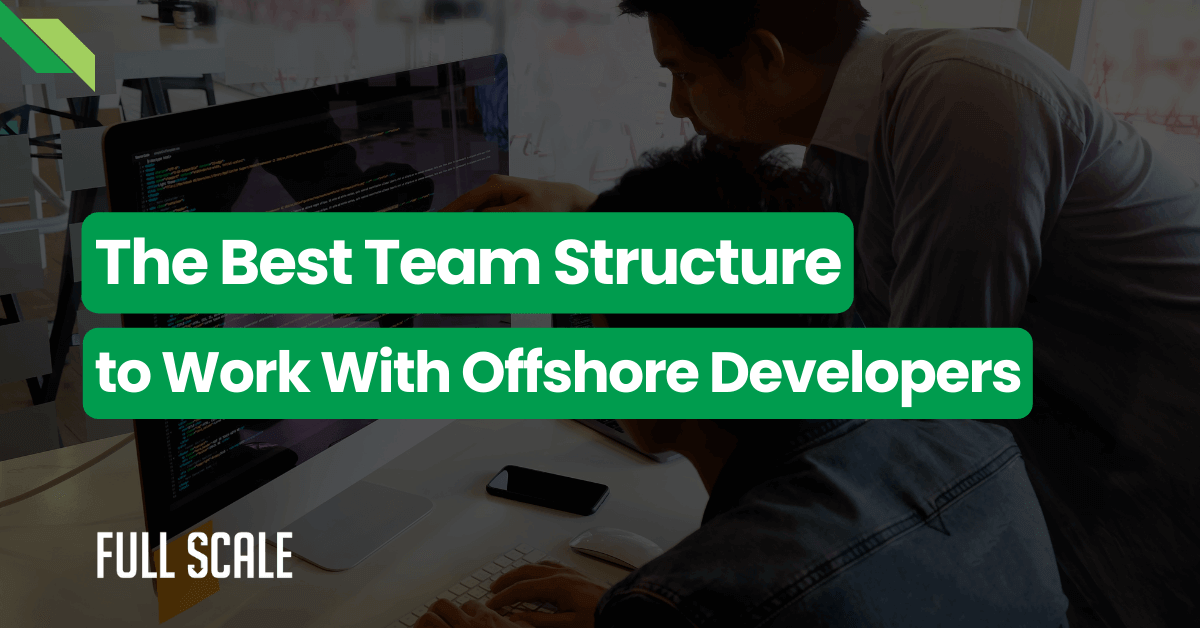I spent 2 years studying elite engineering teams. Not good teams. Not great teams. The absolute elite—the top 1% that ship 10x faster while maintaining higher quality.
Here’s the shocking truth: They don’t have better developers. They have a completely different engineering team mindset that 99% of teams completely miss.
What You'll Learn in This Article
- The 5 hidden cultural traits that make elite engineering teams ship 10x faster
- A 90-day transformation framework to build high performance developer culture
- Why offshore teams often outperform Silicon Valley teams (with data)
- An interactive assessment tool to measure your team's current culture gaps
- Specific metrics that separate the top 1% from average engineering teams
Reading time: 12 minutes | Implementation time: 90 days | Expected improvement: 30-40%
The Problem Nobody Talks About
Your talented developers aren’t shipping fast enough. Competitors with smaller teams are somehow outpacing you. Adding more developers makes you slower, not faster.
You’ve tried everything—better tools, more meetings, aggressive deadlines. Nothing works because you’re optimizing for the wrong things entirely.
According to Stack Overflow’s 2024 Developer Survey, 67% of developers feel unproductive despite working longer hours. GitLab’s 2024 DevSecOps report shows only 23% of teams ship features within planned timelines.
The real problem isn’t your developers’ skills. It’s the engineering team’s mindset that drives every decision they make.
The Elite Engineering Team Reality Check
Calculate where your team stands compared to elite engineering teams. This tool reveals your engineering culture gaps instantly.
Engineering Team Mindset Calculator
Your Results
Now that you’ve seen where your team stands, let’s dive into what actually separates elite engineering teams from everyone else.
What Makes Elite Engineering Teams Different?
After analyzing 50+ engineering teams, the pattern became crystal clear. The top 1% don’t have better technical skills or fancier degrees.
Elite engineering teams succeed because they think differently about every single aspect of software development. It’s not what they know—it’s how they approach problems.

This performance gap isn’t about individual talent. It’s about how elite engineering teams approach every single decision, problem, and opportunity differently.
These performance differences aren’t random. They stem from five specific cultural traits that elite engineering teams cultivate deliberately.
The 5 Cultural Traits Nobody Talks About
The difference between average and elite isn’t mysterious. After studying the top 1%, five distinct patterns emerged that create a high-performance developer culture.
1. Product-First Thinking (Not Code-First)
Average developers ask, “How do I build this feature?” Elite engineering teams ask, “Should we build this at all?”
This engineering team’s mindset shift changes everything. When developers think like product owners, they stop building features nobody uses.
How Average Teams Operate:
- Focus on clean code and perfect syntax
- Measure success by tickets closed
- Wait for product managers to define everything
- Build features because they’re on the roadmap
How Elite Teams Operate:
- Question every feature’s actual value
- Talk directly to users regularly
- Kill features that won’t move metrics
- Suggest better solutions than requested
One of our clients’ offshore teams rejected 40% of the requested features last quarter. They proposed simpler alternatives that delivered better results with 70% less code.
2. Extreme Ownership Without Blame
When production breaks, average teams start the blame game. Elite engineering teams ask, “How do we prevent this forever?”
This high-performance developer culture trait transforms how teams handle problems. Nobody hides mistakes because mistakes become learning opportunities for everyone.
The Ownership Test
Next time something breaks, count how many times someone says "they" versus "we." Elite teams only use "we" when discussing problems.
3. Radical Transparency About Everything
Elite engineering teams share everything—the good, bad, and ugly. Salaries, failures, technical debt, customer complaints—nothing gets hidden from the team.
Most teams hide problems from each other. High-performance developer culture requires brutal honesty about what’s actually happening in your codebase and business.
What Transparency Actually Means:
- Every engineer sees customer support tickets
- Technical debt gets dollar values attached
- Team mistakes become public learning documents
- Performance metrics are visible to everyone daily
4. Continuous Learning During Work Hours
Average teams tell developers to learn on weekends. Elite engineering teams build learning into every single workday without sacrificing velocity.
The engineering team mindset here is simple: Learning isn’t separate from work—it IS the work. Every code review becomes a teaching moment.
According to LinkedIn’s 2024 Workplace Learning Report, companies with strong learning cultures see 57% better retention. Elite teams take this further by making learning mandatory during work hours.
5. Outcome Obsession Over Output
Ticket closed? Nobody cares. Feature shipped? Still, nobody cares. Did it solve the user’s problem? Now, elite engineering teams care.
This mindset shift from output to outcomes changes how developers approach everything. They stop celebrating busy work and start celebrating actual impact.
| Average Team Metrics | Elite Team Metrics |
|---|---|
| Lines of code written | User problems solved |
| Story points completed | Revenue impact delivered |
| Number of deployments | Customer satisfaction increase |
| Code coverage percentage | Time to user value |
| Sprint velocity | Business KPIs improved |
See the difference? Elite engineering teams measure what matters to the business, not what’s easy to count.
Understanding these traits is step one. But how do you actually install them in your team without disrupting everything?
How to Build This Engineering Team Mindset
Transforming your team culture doesn’t require firing everyone and starting over. Small, strategic changes compound into massive improvements within 90 days.
Start with one trait, prove it works, then add another. Elite engineering teams weren’t built overnight—they evolved through deliberate practice.

Most teams try to change everything at once and fail. Elite engineering teams evolve incrementally, proving value at each step.
Week 0-2: Honest Assessment
Survey your team anonymously about the current culture. Ask about ownership, transparency, learning, and how they measure success.
Most CTOs skip this step and guess wrong. You can’t fix problems you don’t acknowledge exist in your engineering team’s mindset.
Week 3-4: Pick Your Battle
Choose the trait with the biggest potential impact. For most teams, starting with ownership culture delivers the fastest wins.
Don’t overthink this decision. Any improvement beats analysis paralysis that keeps your team stuck in mediocrity forever.
Week 5-8: Run Small Experiments
Find 2-3 volunteers eager to try something new. Run a two-week experiment with just this small group first.
Measure everything—productivity, satisfaction, code quality, team morale. Elite engineering teams become elite through constant experimentation and measurement.
Week 9-12: Scale What Works
Take what worked in the experiment and expand it team-wide. Document the process, create supporting structures, and iterate based on feedback.
This is where high-performance developer culture starts taking root. Success breeds success, and momentum builds naturally.
Beyond 90 Days: Lock It In
Make these changes permanent through hiring, promotion criteria, and daily practices. Culture isn’t what you say—it’s what you reward.
Elite engineering teams maintain their edge by constantly reinforcing these cultural traits. One quarter of progress can disappear without deliberate maintenance.
Here’s where things get interesting—and controversial. This transformation actually works better with offshore teams than local ones.
The Offshore Advantage Nobody Expects
Here’s what shocked me most: Offshore teams often build high performance developer culture faster than Silicon Valley teams.
Why? They don’t have decades of bad habits to unlearn. They’re hungry to prove themselves beyond just writing code.
The Counter-Intuitive Truth
Offshore developers typically show stronger product thinking than their US counterparts. They see the full business context, not just technical requirements.
Our data shows offshore teams with proper culture training outperform traditional US teams within six months. The key is hiring for mindset, not just technical skills.
What Makes Offshore Teams Excel:
- Less institutional baggage from previous companies
- Eager to learn and implement new approaches
- Strong collaboration due to timezone awareness
- Better documentation habits by necessity
- Higher retention when treated as equals
One client replaced their entire Silicon Valley team with offshore developers trained in this methodology. They now ship 3x faster at 60% of the cost.
The biggest mistake CTOs make? Trying to copy Google or Facebook instead of building their own unique engineering team mindset.
Common Objections (And Why They're Wrong)
Every CTO has the same doubts about transforming their engineering team’s mindset. Here’s why those concerns don’t hold up.
“This Won’t Work for Legacy Teams”
Legacy teams respond best to these changes. They’re exhausted from the old way and desperate for something better.
Start with your most frustrated developers. They’ll become your biggest champions when they see real change happening.
“We Need Senior Developers First”
Junior developers with the right mindset outperform senior developers with the wrong one. Experience without the right culture creates more problems.
We’ve seen junior offshore teams outperform senior US teams repeatedly. Mindset beats years of experience every single time.
“Our Company Culture Won’t Support This”
You don’t need company-wide buy-in to start. Transform your team first, show results, and watch other departments copy you.
Success spreads naturally in organizations. When your team ships faster with higher quality, everyone wants to know how.
“This Takes Too Long”
Teams see measurable improvements within 30 days. Full transformation takes 90 days, but benefits start immediately.
Compare that to the years you’ll waste staying mediocre. The cost of inaction far exceeds the investment in change.
Ready to stop talking about transformation and actually do it? Here’s how to build your elite engineering team.
Transform Your Team Today
Elite engineering teams aren’t born—they’re built through deliberate culture development. You don’t need rockstar developers or Silicon Valley salaries.
You need the right engineering team mindset. And finding developers who already think this way changes everything.
Why Partner with Full Scale
- We screen for mindset, not just technical skills
- Our developers come pre-trained in product thinking
- 95% retention rate proves our culture works
- Direct integration with your team from day one
- No middlemen or project managers blocking communication
- Month-to-month contracts with no long-term commitment
- 60+ successful tech companies trust our approach
Initial improvements appear within 30 days when you focus on one trait. Full transformation to elite engineering teams typically takes 90-120 days with consistent effort.
Most teams see 20-30% productivity gains in the first month alone. The key is starting with small experiments rather than massive overhauls.
Remote teams often build stronger culture than co-located teams. They must be intentional about communication, documentation, and collaboration by default.
Elite remote teams use their constraints as advantages. They create better processes because they can’t rely on hallway conversations.
Resistance usually comes from fear of blame or increased expectations. Start with volunteers who want change and let success spread naturally.
When skeptics see early adopters getting better results with less stress, they join willingly. Force never works, but success attracts everyone.
Track both quantitative and qualitative metrics. Measure deployment frequency, defect rates, cycle time, and employee satisfaction scores.
Elite engineering teams also measure customer impact, not just engineering metrics. Connect every metric back to business outcomes that matter.
Companies without tech DNA often see the biggest improvements. They don’t have preconceived notions about how engineering “should” work.
High-performance developer culture principles apply everywhere. The mindset shifts work for any team-building products or services.

Matt Watson is a serial tech entrepreneur who has started four companies and had a nine-figure exit. He was the founder and CTO of VinSolutions, the #1 CRM software used in today’s automotive industry. He has over twenty years of experience working as a tech CTO and building cutting-edge SaaS solutions.
As the CEO of Full Scale, he has helped over 100 tech companies build their software services and development teams. Full Scale specializes in helping tech companies grow by augmenting their in-house teams with software development talent from the Philippines.
Matt hosts Startup Hustle, a top podcast about entrepreneurship with over 6 million downloads. He has a wealth of knowledge about startups and business from his personal experience and from interviewing hundreds of other entrepreneurs.




